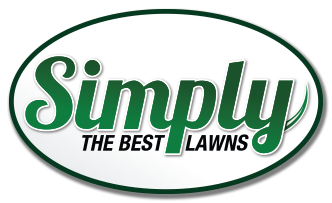Turf Report
We work hard to give our customers the best lawn care experience possible. In addition to providing exceptional service, we strive to educate our customers on ways they can keep their lawn healthy and green all season long. Check out our seasonal tips below to learn how you can maintain your turf!
Mowing:
The pros and cons of mowing have a huge influence on how healthy a lawn is, and this is why mowing your lawn correctly is so important. In fact, in many ways it's the key, so let's take a look at some mowing techniques that will help your grass look better and yet stay healthy.
Height of cut - Mow at least 3 1/2 inches or higher. The higher the mowing height, the more water is retained in the grass plant. It also helps to shade the grass roots and soil keeping them cooler in the summer months. When grass is severely cut back, the growth of the roots and the plant comes to a complete stop until the leaves can recover. This places a huge amount of stress on the grass plant which is often visible in a yellow to brownish look to the lawn. Mowing too short creates stress on the grass plant which will make it thin out, be more susceptible to heat, cold, drought, insects and disease.
Frequency of cut - Mow the lawn only when needed. Base your mowing schedule on the growth rate of the lawn rather than a time schedule. Never remove more than 1/3 of the grass blade at any one mowing. Removing more than ⅓ of the leaf blade in a single mowing is detrimental to plant health. Do not mow when the lawn is dormant from heat stress!!!! This will break the grass plant creating permanent damage to the lawn. Do not mow during the hottest part of the day. Do not mow the lawn when it is wet. Disease organisms are more easily spread in wet turf and fresh cut leaf blades offer a point of entry for infection.
Clippings - Do not remove grass clippings unless they are smothering the lawn. Clippings decompose and re-supply the lawn with nutrients. Clippings do not contribute to thatch.
Blade care - Maintain a sharp mowing blade. Lawns mowed with a dull blade appear "ragged" and "wounded", which is unattractive and results in making the grass plant more susceptible to disease and insects. Ideally, mower blades should be sharpened once a month.
Direction of cut - Always Vary Your Mowing Pattern. Try not to mow your lawn in the same direction every time. Shake it up a bit. When you mow in the same direction all the time you can compact the soil into actual ruts. Plus, grass leans and grows in the direction it has been mowed. By mowing in a different direction each time, you will help the grass grow more upright and avoid developing ruts in your soil that in some cases are quite visible.
Mower maintenance - Avoid filling your mower with gas or doing other maintenance work while on the lawn. Any gasoline or oil spills are going to kill the grass and sterilize the soil.
Watering:
General requirement - Your lawn should receive roughly 1 to 1 1/2 inches of water per week (even during the hottest, driest summer months). If rainfall should occur, adjust the amount of watering you do. Usually once every 3 days is sufficient. Deep, infrequent watering to a soil depth of 4-6 inches is recommended. Frequent, light watering that only dampens the grass can cause more harm than good, by creating conditions favorable for diseases to form and earlier crabgrass breakthrough.
Timing - The best time to water your lawn is very early in the morning (starting around 4 or 5 a.m.). This will allow the lawn to dry as the day progresses. Watering in the middle of the day when temperatures are hot allows the water to evaporate. Evening watering promotes disease problems due to prolonged wetness.
A rule of thumb for figuring out how long to water is to put a coffee can or bucket on the lawn to see how long it takes to collect the 1 to 1 1/2 inches of water. You then know how long it will take to water the lawn to the proper depth.

